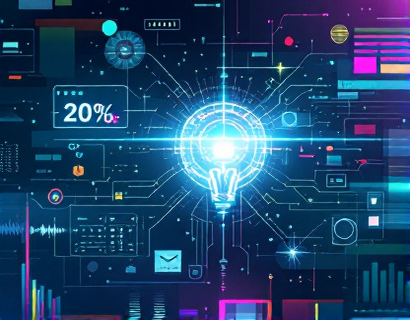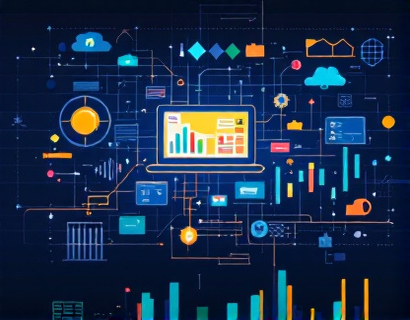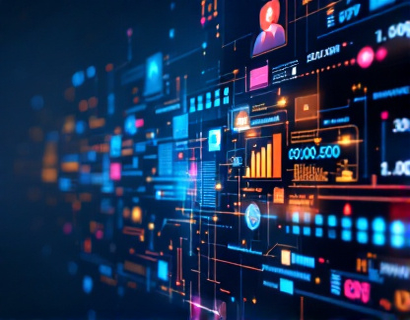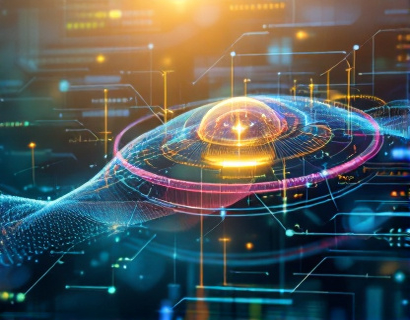Unleashing Next-Gen Productivity with AI and Crypto: A Synergistic Approach
The integration of Artificial Intelligence (AI) and Cryptocurrency is paving the way for a new era of productivity tools that are smarter, more efficient, and tailored to the needs of tech-savvy professionals and early adopters. This article delves into the advanced solutions that emerge from the convergence of these two revolutionary technologies, exploring how they can transform workflows and task management for a more streamlined digital experience.
Understanding the Synergy
The combination of AI and cryptocurrency creates a powerful synergy that enhances digital productivity. AI brings intelligence, automation, and predictive capabilities to digital tools, while cryptocurrency offers decentralization, security, and a new economic model. Together, they can create applications that not only optimize tasks but also ensure data integrity and user privacy.
AI-Driven Task Optimization
AI algorithms can analyze vast amounts of data to identify patterns and predict outcomes, making them ideal for optimizing tasks and workflows. For instance, AI can automate repetitive tasks, such as data entry or scheduling, freeing up professionals to focus on higher-value activities. Machine learning models can also adapt to individual user behaviors, providing personalized recommendations and optimizing task sequences for maximum efficiency.
Consider a project management tool that uses AI to predict project timelines based on historical data and real-time updates. Such a tool can automatically adjust resource allocation, identify potential bottlenecks, and suggest optimal workflows, ensuring projects stay on track and within budget.
Cryptocurrency and Decentralization
Cryptocurrency introduces a decentralized approach to transactions and data management, which can significantly enhance the security and transparency of digital tools. By leveraging blockchain technology, these tools can ensure that data is immutable and tamper-proof, reducing the risk of fraud and errors. This is particularly crucial in industries where data integrity is paramount, such as finance, healthcare, and supply chain management.
For example, a decentralized task management platform can use blockchain to record task assignments, progress, and completions in a transparent and verifiable manner. This not only builds trust among team members but also provides an auditable trail that can be invaluable for compliance and accountability.
Enhanced Security and Privacy
Security and privacy are top concerns in the digital age, and the combination of AI and cryptocurrency addresses these issues effectively. AI can detect and mitigate security threats in real-time, while cryptocurrency's cryptographic techniques ensure that sensitive data remains confidential and secure. This dual approach creates a robust defense mechanism against cyber threats.
Imagine a digital workspace where AI monitors network activity continuously, identifying and neutralizing threats before they can cause harm. Concurrently, cryptocurrency-based encryption ensures that all data transmitted within this space is secure, providing peace of mind to users.
Smart Contracts for Automated Workflows
Smart contracts, self-executing contracts with the terms directly written into code, can revolutionize workflow automation. When integrated with AI, smart contracts can not only execute tasks but also adapt to changing conditions and optimize processes dynamically. This creates a highly responsive and efficient workflow that can adjust in real-time to meet evolving business needs.
For instance, in a supply chain management system, smart contracts can automate payments to suppliers once delivery confirmation is received and verified by AI. If any discrepancies are detected, the smart contract can trigger a re-evaluation process, ensuring that issues are resolved promptly and efficiently.
Personalized User Experiences
AI's ability to learn from user behavior and preferences can be harnessed to create highly personalized digital experiences. By analyzing user interactions, AI can tailor interfaces, suggest tools, and optimize workflows to match individual needs. This level of customization not only enhances productivity but also improves user satisfaction and engagement.
Consider a coding environment that uses AI to analyze a developer's coding style and frequently used libraries, then suggests relevant plugins and optimizes the interface layout for faster access to commonly used functions. This personalized approach can significantly reduce the time and effort required to complete tasks.
Decentralized Identity and Access Management
Cryptocurrency's decentralized nature can also transform identity and access management in digital tools. By using blockchain-based identity solutions, users can have full control over their personal data and credentials, reducing the risk of data breaches and unauthorized access. AI can further enhance this by managing access permissions based on real-time context and user behavior.
For example, a decentralized work portal can use blockchain to store and verify user identities and permissions. AI can then dynamically adjust access rights based on the user's role, current project, and security context, ensuring that only authorized individuals can access sensitive information.
Economic Incentives and Tokenization
The integration of cryptocurrency introduces economic incentives that can motivate users to contribute to and improve digital tools. Tokenization, the process of representing assets as tokens on a blockchain, can be used to create token-based reward systems. Users who contribute valuable insights, fix bugs, or develop new features can receive tokens as rewards, fostering a community-driven approach to innovation and improvement.
In a developer community, for instance, tokens can be used to reward contributors based on their contributions, such as code commits, bug reports, or documentation updates. This not only incentivizes active participation but also aligns the interests of the community with the success of the platform.
Challenges and Considerations
While the potential benefits are significant, there are also challenges to consider when integrating AI and cryptocurrency into digital tools. Scalability, regulatory compliance, and user adoption are key factors that need to be addressed to ensure the success of these advanced solutions.
Scalability remains a challenge for blockchain technology, as transaction processing speeds and network capacity need to keep pace with growing user demands. However, ongoing developments in blockchain scalability solutions, such as layer 2 protocols and sharding, are addressing these issues.
Regulatory compliance is another critical aspect, as the use of cryptocurrency is subject to varying laws and regulations across different jurisdictions. Developers must ensure that their platforms comply with local regulations to avoid legal issues and build trust with users.
User adoption is also crucial. Educating users about the benefits and ease of use of AI and cryptocurrency integrated tools is essential for widespread acceptance. Intuitive interfaces and clear onboarding processes can help overcome initial resistance and encourage adoption.
Future Prospects
The future of AI and cryptocurrency in digital productivity tools is promising. As technology continues to advance, we can expect even more sophisticated and seamless integrations that further enhance efficiency and user experience. The convergence of these technologies will likely lead to the development of entirely new categories of digital tools that were previously unimaginable.
For instance, AI-powered virtual assistants integrated with cryptocurrency-based economic models could create highly autonomous and self-sustaining digital work environments. These environments would not only optimize tasks but also reward users for their contributions, creating a truly collaborative and incentivized ecosystem.
In conclusion, the synergy between AI and cryptocurrency offers a transformative approach to digital productivity. By leveraging the strengths of both technologies, we can create advanced tools that not only streamline workflows but also ensure security, privacy, and economic incentives. As these solutions continue to evolve, they will play a pivotal role in shaping the future of digital workplaces.











































